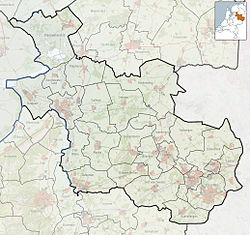
The Rijksmuseum is the national museum of the Netherlands dedicated to Dutch arts and history and is located in Amsterdam. The museum is located at the Museum Square in the borough of Amsterdam South, close to the Van Gogh Museum, the Stedelijk Museum Amsterdam, and the Concertgebouw.

Enschede is a city and municipality in the province of Overijssel. It is located in the Twente region of the eastern Netherlands. The east of the urban area reaches the border of the German city of Gronau.
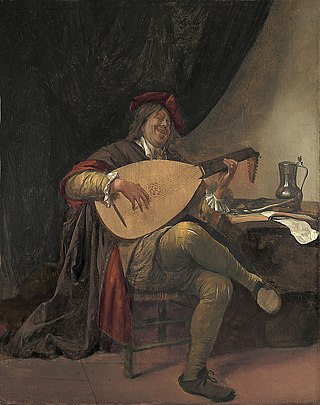
Jan Havickszoon Steen was a Dutch Golden Age painter, one of the leading genre painters of the 17th century. His works are known for their psychological insight, sense of humour and abundance of colour.

The Hague School is a group of artists who lived and worked in The Hague between 1860 and 1890. Their work was heavily influenced by the realist painters of the French Barbizon school. The painters of the Hague school generally made use of relatively somber colors, which is why the Hague School is sometimes called the Gray School.

Joos van Cleve was a leading painter active in Antwerp from his arrival there around 1511 until his death in 1540 or 1541. Within Dutch and Flemish Renaissance painting, he combines the traditional techniques of Early Netherlandish painting with influences of more contemporary Renaissance painting styles.
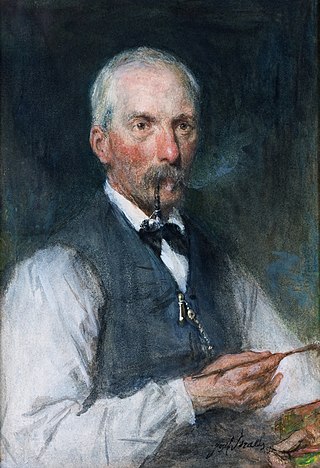
Jan Hendrik Weissenbruch, also known as Hendrik Johannes Weissenbruch was a Dutch painter of the Hague School. He is noted especially for his watercolours.

Gerard or Gérard (de) Lairesse was a Dutch Golden Age painter and art theorist. His broad range of skills included music, poetry, and theatre. De Lairesse was influenced by the Perugian Cesare Ripa and French classicist painters such as Charles le Brun, Simon Vouet and authors such as Pierre Corneille and Jean Racine. His importance grew in the period following the death of Rembrandt. His treatises on painting and drawing, Grondlegginge Ter Teekenkonst (1701), based on geometry and Groot Schilderboek (1707), were highly influential on 18th-century painters.
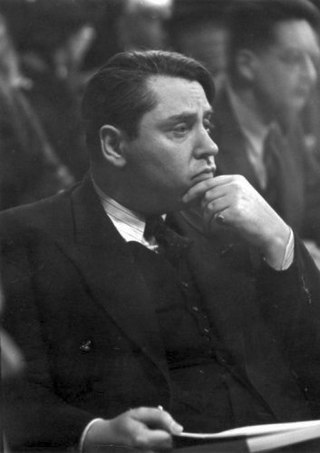
Jacques Goudstikker was a Jewish Dutch art dealer who fled the Netherlands when it was invaded by Nazi Germany during World War II, leaving three furnished properties and an extensive and significant art collection including over 1200 paintings, many of which had been previously catalogued as "Old Masters". The entire collection, which had been surveyed by Hermann Goering himself, was subsequently looted by the Nazis. Between the two World Wars, Jacques Goudstikker had been the most important Dutch dealer of Old Master paintings, according to Peter C. Sutton, executive director and CEO of the Bruce Museum of Arts and Science. Despite efforts of Goudstikker's widow after the war to regain possession of the collection, it was not until after her death that the Dutch government finally restituted 202 paintings to the Goudstikker family in 2006. To finance efforts to reclaim more of the stolen art, a large portion of them were sold at auction in 2007 for almost $10 million.
Willem Adriaan van Ravesteijn was a Dutch gallerist and art collectors in the Netherlands. He and Geert van Beijeren founded the leading Dutch art gallery Art & Project (1968–2001) and publishers of the art magazine of the same name (1968–1989). During its thirty-year existence, the gallery as well as the magazine made substantial contributions to the Dutch art climate.

Museum Bredius is a museum named after Abraham Bredius on the Lange Vijverberg in The Hague. It is remarkable for its collection of etchings and paintings, but is most attractive to visitors for its accurate restoration of the 18th-century Herenhuis interior with period furnishings.
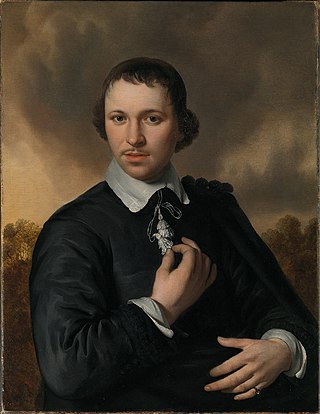
Jan van de Cappelle was a Dutch Golden Age painter of seascapes and winter landscapes, also notable as an industrialist and art collector. He is "now considered the outstanding marine painter of 17th century Holland".
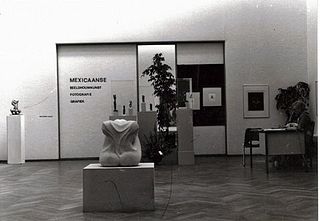
Pulchri Studio is a Dutch art society, art institution and art studio based in The Hague ('s-Gravenhage), Netherlands.

Paul Joseph Constantin Gabriël or Paul Gabriël was a painter, draftsman, watercolorist, and etcher who belonged to the Hague School.
Jan Bernard van Heek was a member of the famous Dutch textile family from Twente. Among his achievements was founding the Rijksmuseum Twenthe in Enschede, the Netherlands. Jan Bernard Van Heek donated his own private collection and the museum building to the government. This made it a national museum. The museum is still an important icon in the east of the Netherlands.

De Museumfabriek is a museum in Enschede, Netherlands. The new museum is located partly in a renovated Jannink textile factory, in reference to Enschede's textile history, and partly in an adjourning new building designed by the Amsterdam-based firm SeARCH. The project architect was Bjarne Mastenbroek. It is an Anchor point on the European Route of Industrial Heritage.

Girl in a Blue Dress, also called Portrait of a Girl Dressed in Blue or simply Portrait of a Girl, is an oil painting by Johannes Cornelisz Verspronck in the collection of the Rijksmuseum. It was acquired by the museum in 1928 as a gift from the Vereniging Rembrandt. The identity of the girl and her family are unknown.
Kees Stoop was a Dutch painter, illustrator and etcher.

Still Life with Flowers on a Marble Slab is a 1716 floral painting by Rachel Ruysch. It is in the collection of the Rijksmuseum, in Amsterdam.

The Standard Bearer is a three-quarter-length self-portrait by Rembrandt formerly in the Paris collection of Elie de Rothschild, and purchased by the Rijksmuseum for 175 million euros with assistance from the Dutch state and Vereniging Rembrandt in 2021. It was painted on the occasion of the artist's move from Leiden to Amsterdam and is seen as an important early work that "shows Rembrandt's ambition to paint a group portrait for the Amsterdam militia, at the time the most valued commission a painter could be awarded."
Jop Horst was a Dutch visual artist and filmmaker, living and working in Hengelo. His oeuvre includes various types of media and techniques, such as kinetic installations, drawings, paintings, experimental films, video art and performances.

